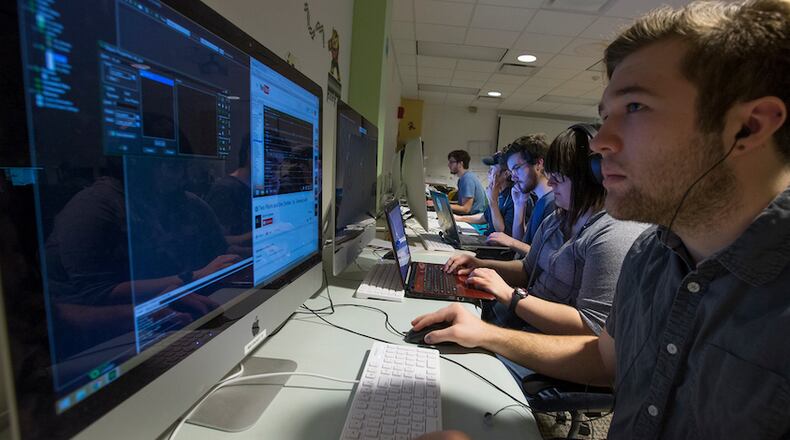The recently released Princeton review also named Miami’s undergraduate Games and Simulation program, which is part of Miami’s Department of Emerging Technology in Business + Design (ETBD), as the 27th overall in the nation among both public and private universities.
It’s the latest of a series of honors for the popular and growing program, said Michael Baily-Van Kuren, chairman of the department.
“We’ve been able to stay as one of the top public universities in games for almost 10 years now,” said Baily-Van Kuren.
This is the 14th year for the Princeton Review’s undergraduate game design list.
There are nearly 160 students in the program, which draws interest nationwide, said Miami officials.
“It gets the Miami brand out there,” Bailey-Van Kuren said. “Students are finding our program from all over the country at this point.”
Schools were selected for the Princeton Review list based on a 2022 survey of administrators at 150 schools in the United States and abroad offering game design courses, majors, or degree programs. Information was collected in the areas of academics, faculty, technology, and career prospects.
Rob Franek, editor-in-chief for the Princeton Review, stated in the announcement of the annual survey that all the schools listed as having top programs “have first-rate programs in game design.”
“Their facilities are state-of-the-art, and their alumni include many of the industry’s most successful artists, designers, developers, and entrepreneurs,” said Franek.
Miami’s Games + Simulation program prepares students for a career or graduate study in game design, development, 3D modeling, creative development, writing or designing, esports, and games in other industries.
School officials said students also are encouraged to take creative risks and to think critically about audiences, narratives, and aesthetics in a program that bridges computer science, engineering, education, communication, art, and business.
“One of the things that I think is unique about our program is that we include the developer side, the coding side, the game art side, in one interdisciplinary department,” Bailey-Van Kuren said. “We have it all together.”
Two faculty members and 16 students recently attended the 2023 Game Developers Conference in San Francisco from March 20-24. Bailey-Van Kuren noted faculty members often meet one-on-one with students to discuss opportunities, careers, and potential fields.
“It really comes down to the people,” he said. “The faculty and the students are what makes the program. It’s nice to get recognized, but it’s the things you see from our people every day.”
About the Author

